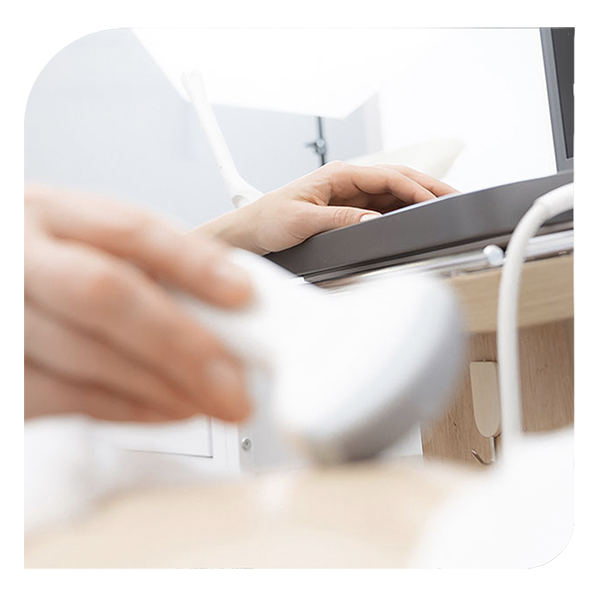

Breast biopsy plays a pivotal role in the early detection and accurate diagnosis of breast abnormalities, contributing significantly to the fight against breast cancer. As a crucial diagnostic tool, breast biopsy aids in identifying the nature of suspicious breast tissue, determining whether it is cancerous or benign, and guiding healthcare professionals in formulating tailored treatment plans.


Breast biopsy plays a pivotal role in the early detection and accurate diagnosis of breast abnormalities, contributing significantly to the fight against breast cancer. As a crucial diagnostic tool, breast biopsy aids in identifying the nature of suspicious breast tissue, determining whether it is cancerous or benign, and guiding healthcare professionals in formulating tailored treatment plans.
Breast Biopsy
Advancements in Breast Biopsy Techniques: Navigating Towards Early Detection and Precise Diagnosis
Types of Breast Biopsy:
There are several types of breast biopsy procedures, each with its advantages and applications. The commonly performed biopsies include core needle biopsy, fine needle aspiration (FNA), and surgical biopsy. These techniques allow medical professionals to extract tissue samples for analysis and provide valuable insights into the nature of the breast lesion.Minimally Invasive Techniques:
Advancements in medical technology have led to the development of minimally invasive breast biopsy techniques, reducing patient discomfort and recovery time. Image-guided procedures, such as ultrasound-guided and stereotactic-guided biopsies, enable precise targeting of suspicious lesions with minimal impact on surrounding healthy tissue. These techniques have revolutionized the diagnostic process, making it more accessible and patient-friendly.Benefits of Breast Biopsy:
Early detection is key to successful breast cancer treatment. Breast biopsy serves as an indispensable tool in identifying abnormalities at their earliest stages, allowing for prompt intervention and improved treatment outcomes. Moreover, the ability to differentiate between benign and malignant lesions helps avoid unnecessary surgeries and treatments for non-cancerous conditions.Patient Empowerment and Informed Decision-Making:
Breast biopsy empowers patients by providing them with accurate information about their condition, allowing for informed decision-making regarding their treatment options. Armed with a precise diagnosis, individuals and their healthcare teams can collaboratively decide on the most appropriate and effective course of action.Challenges and Ongoing Research:
While breast biopsy has undoubtedly advanced diagnostic capabilities, ongoing research aims to enhance its accuracy and efficiency further. Researchers are exploring novel technologies, such as molecular profiling and artificial intelligence applications, to refine diagnostic capabilities and streamline the biopsy process. Breast biopsy remains a cornerstone in the early detection and precise diagnosis of breast abnormalities, facilitating tailored treatment plans and improving patient outcomes. With continuous advancements in technology and research, the future promises even more refined and efficient biopsy techniques, underscoring the importance of this diagnostic tool in the ongoing battle against breast cancer. Regular screenings and prompt biopsies continue to be vital components in the comprehensive approach to breast health, emphasizing the significance of early intervention in the quest for improved breast cancer outcomes.A breast biopsy is a medical procedure where a small sample of breast tissue is removed and examined under a microscope to determine the presence of abnormalities or potential cancerous cells. It is often performed when a mammogram, ultrasound, or physical examination reveals suspicious changes in the breast tissue. The biopsy helps healthcare professionals make an accurate diagnosis, distinguishing between benign and malignant conditions, and guides appropriate treatment decisions.
There are several types of breast biopsy procedures, each with its advantages and applications. Common methods include core needle biopsy, fine needle aspiration (FNA), and surgical biopsy. Minimally invasive techniques, such as ultrasound-guided and stereotactic-guided biopsies, have become increasingly popular due to their precision and reduced impact on surrounding healthy tissue. The choice of biopsy method depends on various factors, including the size and location of the abnormality.
While patients may experience some discomfort, breast biopsies are generally well-tolerated and considered minimally invasive. Local anesthesia is typically administered to numb the area before the biopsy. During the procedure, patients may feel pressure or a slight pulling sensation, but it should not be painful. After the biopsy, mild soreness or bruising at the biopsy site is common and can be managed with over-the-counter pain medication. Results from the biopsy are usually available within a few days, allowing for prompt follow-up discussions with healthcare providers regarding the next steps in diagnosis and treatment planning.
Schedule Your Appointment Now
Begin your journey to a more radiant, confident version of yourself by contacting us today. We recognize that every individual’s path is distinct, and we’re here to support you through yours.

